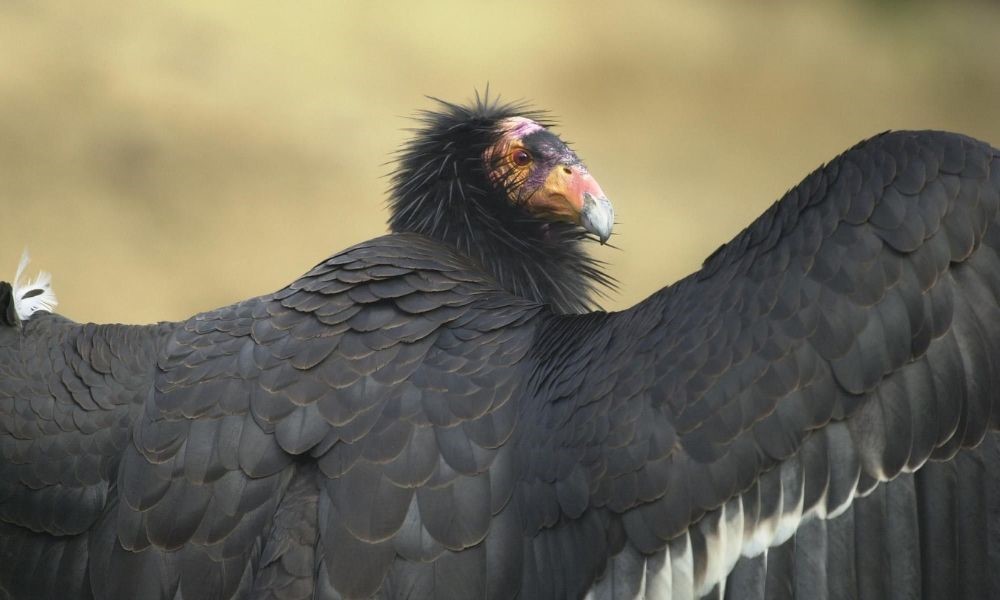Critically-endangered California condors are once again spreading their majestic wings and flying to freedom in ancestral Yurok land, thanks to a multi-agency, decades-long recovery effort and the perseverance of the tribe, who sees the birds as sacred.
The Yurok Tribe, whose reservation lies along the Klamath River in Northern California, already has released three captive-reared juvenile condors to the wild: Ney-gem’ ‘Ne-chween-kah, whose name translates to “she carries our prayers,” Nes-kwe-chokw,’ meaning “he who returns,” and Poy’-we-son, or “he who goes out ahead.”
Tiana Williams-Claussen, a wildlife biologist and director of the Yurok Tribe Wildlife Department, told news that the tribal facility within the Redwood National Park plans to continue rearing, releasing, and monitoring the critically-endangered birds for the next 20 years.
“Ultimately, of course, the goal is that we bring the world back into balance, and we no longer have to maintain this intensive management, and they are just free-flying, tagless birds reintegrated into their traditional role in our ecosystem,” she said.
Hundreds of the condors used to roam the nation. But the arrival of settlers brought a massacre as hunters shot the birds and collected their eggs, and human-created toxins — like DDT, poisonous bait including cyanide and strychnine left out for other predators, and lead from ammunition — also led to massive condor deaths.
By 1982, only 22 California condors remained in the entire world, according to the U.S. Fish and Wildlife Service.
That destruction had negative repercussions for other animals and the ecosystem. Williams-Claussen called the condors “the bird boss of decomposition” and noted they help clean up dead animals while also making food available to other scavengers. Condors also have important cultural significance to the Yurok, whose legends say that condors gave the tribe the sacred song they sing in ceremonies while they seek to restore balance and harmony to the natural world.
“We believe that because he actually is the bird who flies higher than any other in our eco-region that he’s the one to carry our prayer to the heavens and across the world when we’re asking for the world to be in balance,” Williams-Claussen told NPR.
The California condor recovery effort has not been without controversy — with environmentalists initially appalled when the federal government announced plans in the 1980s to capture and captive-breed the handful of wild condors still in existence, with the sole purpose of saving them from extinction. Young condors in the wild will spend about a year with their parents to learn how to find food and navigate their territory filled with enormous redwoods and the ocean breeze, and biologists involved in their reintroduction had to learn how to maintain these strong social ties in captivity.
Today, however, there are more than 500 California condors living their lives in the wild, including the arrival of the first California condor to tribal ancestral lands for the first time in about 130 years, according to authorities. Conservationists also have made huge strides in raising to-be-released condor chicks in a way that more closely resembles their natural environment and hierarchies.
The Yurok facility, for example, contains large wire-mesh enclosures in the national park that allow juvenile condors to view the outside world and other scavengers — including ravens and turkey vultures — who feed outside the enclosures. The tribe also has an adult condor within the enclosures to instruct the young condors in the condor behavior that will be so necessary for their survival once released.
Tribal biologists also tag the juvenile birds so they can monitor their whereabouts and intervene if needed to save their lives.
Williams-Claussen told news that biologists have spent the night in canyons guarding young condors who got stuck waiting for a wind to help them lift off, or performing chelation therapy to remove life-threatening levels of lead to keep the birds alive before biologists once again release them.
For the tribe, the intensive efforts are worth it to save a species they hold so dear. Like their feathered teachers, the Yurok also share the condors’ history of being brought back from the brink of extinction from human-caused actions.
Yurok tribal land got targeted when settlers found gold — with news reporting that by the end of the California Gold Rush, an estimated 75 percent of Yurok died in massacres and from disease. In the dark period that followed, survivors were forbidden to speak their language or practice their cultures.
A tribal elder who survived the boarding school days actually was the member on the tribal council who requested the tribe’s help with condor conservation efforts in 2003, Williams-Claussen said. The tribe conducted an environmental assessment to ensure their land in Northern California would still be suitable habitat for condors and received permission from the government in 2008 to establish their rearing and release facility.
Williams-Claussen said the return of the California condors to tribal land is healing on both a spiritual and ecological level.
“I have a four-year-old daughter,” Williams-Claussen told NPR. “She is going to grow up with condors in her sky for her entire life. She is not going to know what it is to miss condors. She will always live in relationship with condors, which is really what this project is all about—bringing Condor home, back into our communities, back into our conversations, back into our households, and into the minds and hearts of our children on behalf of the hearts of our elders.”
Lady Freethinker does not support captive-breeding of vulnerable species for people’s ‘entertainment’ or under the guise of ‘conservation,’ and we applaud the Yurok Tribe for keeping the condors’ wild nature, their welfare and well-being as the ultimate goal of this rearing and release program.
We also look forward to the day when California condors have fully recovered and are allowed to peaceably exist without human intervention, in the wild — where they belong and deserve to be.








